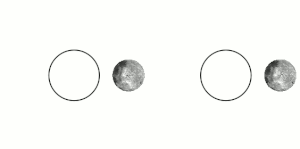This is probably all crazy talk, but I found the correlations to be interesting nonetheless. :
After trying to link together the elements found amongst the ruins, the common theme is Geometry.
Considering possibilities of what links Geometry to space, or going with space travel etc. as a linking theme I stumbled on Kepler.
---------------
Kepler :
(Wiki)Johannes Kepler (German: [ˈkɛplɐ]; December 27, 1571 – November 15, 1630) was a German mathematician, astronomer, and astrologer. A key figure in the 17th century scientific revolution, he is best known for his laws of planetary motion, based on his works Astronomia nova, Harmonices Mundi, and Epitome of Copernican Astronomy. These works also provided one of the foundations for Isaac Newton's theory of universal gravitation.
Kepler's first major astronomical work, Mysterium Cosmographicum (The Cosmographic Mystery) [1596], was the first published defense of the Copernican system. Kepler claimed to have had an epiphany on July 19, 1595, while teaching in Graz, demonstrating the periodic conjunction of Saturn and Jupiter in the zodiac: he realized that regular polygons bound one inscribed and one circumscribed circle at definite ratios, which, he reasoned, might be the geometrical basis of the universe. After failing to find a unique arrangement of polygons that fit known astronomical observations (even with extra planets added to the system), Kepler began experimenting with 3-dimensional polyhedra. He found that each of the five Platonic solids could be inscribed and circumscribed by spherical orbs; nesting these solids, each encased in a sphere, within one another would produce six layers, corresponding to the six known planets—Mercury, Venus, Earth, Mars, Jupiter, and Saturn.
(The Harmony of the Spheres, a transdisciplinary idea that unites cosmology, astronomy, mathematics, and music theory, has been a major vehicle of the Pythagorean current in the intellectual history of the West.
http://hermetic.com/godwin/kepler-and-kircher-on-the-harmony-of-the-spheres.html
- Note here that there is the musical scales to represent planets. I thought I'd include this link purely because of the possible obelisk transmitted code + People having mentioned that it reminds them of sheet music.)
"Kepler's Harmony of the Worlds" (1977). An excerpt of the piece was selected by Carl Sagan for inclusion on the Voyager Golden Record, launched aboard the Voyager spacecraft.
- Interesting to know!
----------
Platonic Solids:
https://en.wikipedia.org/wiki/Platonic_solid
Note that earlier Kepler had used the Icosahedron as part of Mysterium Cosmographicum. The Icosahedron - AKA, the Ancient Orb, also the planet Earth is represented as this.
https://valerielenton.wordpress.com...y-earths-planetary-grid-forms-metatrons-cube/
----------
Sacred Geometry
"Sacred geometry involves sacred universal patterns used in the design of everything in our reality, most often seen in sacred architecture and sacred art. The basic belief is that geometry and mathematical ratios, harmonics and proportion are also found in music, light, cosmology."
SYMBOLISM. The platonic solids. Sacred Geometry is a term used to describe patterns, shapes and forms that are part of the make up of all living things. ... The platonic solids include the tetrahedron, cube, octahedron, dodecahedron & icosahedron.
I found quite a few pages referencing "The Sun is a portal for space faring civilisations using a form of hyper-dimensional mathematics based on sacred geometry"
TLDR - As I've seen suggested perhaps these Ancient Ruins are a guide on how to find the Ancients? Perhaps this site contains the instructions of better space travel or the means of being able to jump through space to find them?
Or using the Platonic Solids these Ruins are a map of a System? Who knows?
TBH I've read a lot today, * Takes Tin foil hat off*
Thought i'd bring this all up incase someone with more experience can draw better lines off of this.





